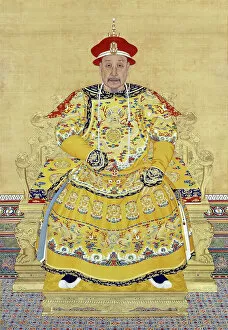Traditional Chinese Dress Collection
"Exploring the Rich Tapestry of Traditional Chinese Dress
All Professionally Made to Order for Quick Shipping
"Exploring the Rich Tapestry of Traditional Chinese Dress: From Emperor Qianlong to Pu-Yi and Beyond" Step into a world of elegance and cultural heritage as we delve into the captivating realm of traditional Chinese dress. Throughout history, this attire has not only been a symbol of fashion but also an embodiment of China's rich history and diverse dynasties. Emperor Qianlong, in his old age, donned majestic robes that exuded power and authority. His regal presence was mirrored by Empress Tzu-Hsi, whose portrait captured her gracefulness in vibrant watercolors on delicate paper. The influence of Confucius can be seen in the modest yet graceful garments worn by men and women alike. These timeless ensembles embody respect for tradition while showcasing intricate embroidery and flowing silhouettes. Sun Yat-Sen, accompanied by his wife in a black-and-white photograph, epitomized modernity while still embracing elements of traditional dress. They paved the way for change during China's transformative era. Heroes such as Empress Wu left their mark on Chinese history through their remarkable achievements - their clothing reflecting both strength and femininity. Meanwhile, Jesuit missionaries embraced Mandarin costumes as they sought to understand Chinese culture better. Even technological advancements found their place within this sartorial narrative; an illustration from Le Petit Journal showcased the first airplane soaring above ancient landscapes - a testament to China's progressiveness. From Chien-Lung's reign to Michael Rogerius' exploration alongside Matteo Riccius' missionary work, these individuals brought together cultures through fashion choices that bridged East with West. In 1932, Pu-Yi and his wife posed for a black-and-white photograph wearing exquisite traditional attire - capturing both nostalgia for imperial times and anticipation for new beginnings amidst political changes. Lastly, Emperor Young-Lo lithograph portrayed him adorned in resplendent robes that reflected his status as a ruler who valued art and culture. Traditional Chinese dress is not merely a garment.













